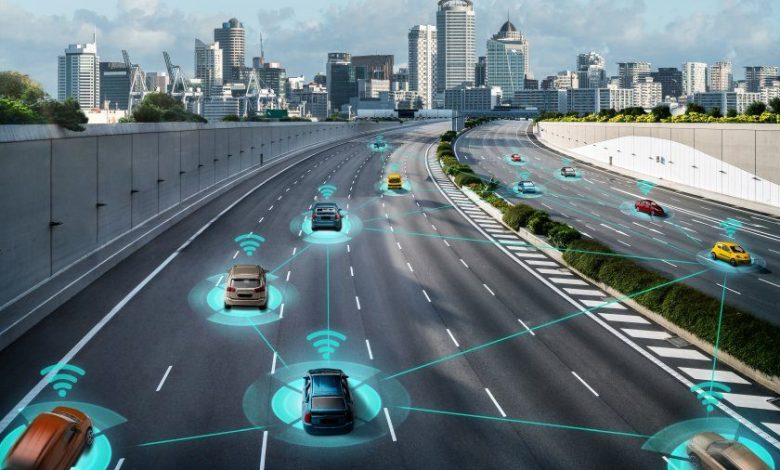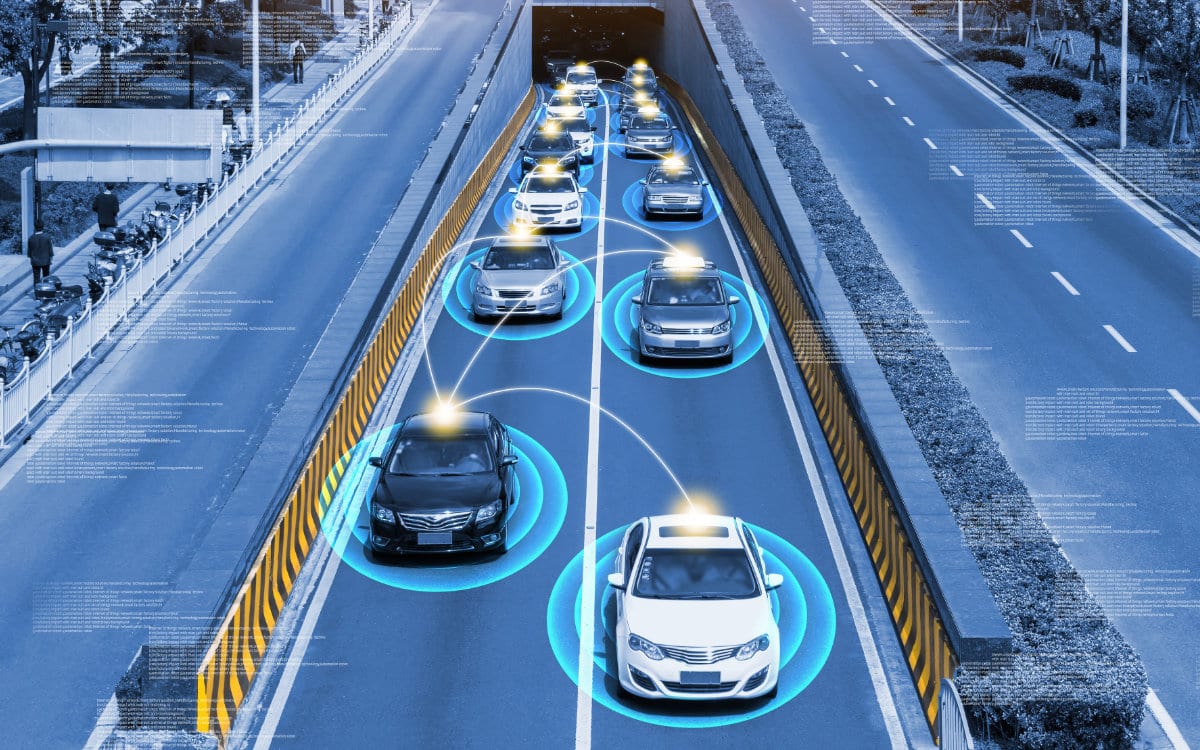How Connected Autonomous Vehicles Are Revolutionizing the Automotive Industry

Introduction to Connected Autonomous Vehicles (CAVs)
Picture a world where cars navigate busy city streets effortlessly, communicating with each other to avoid collisions and traffic jams. This futuristic scenario is becoming a reality with the rise of Connected Autonomous Vehicles (CAVs). Imagine hopping into your car, relaxing as it takes you to your destination safely and efficiently while you catch up on emails or enjoy a movie. Let’s delve into how CAVs are revolutionizing the automotive industry and shaping the way we travel in the 21st century!
The Technology Behind CAVs
Connected Autonomous Vehicles (CAVs) are at the forefront of technological innovation in the automotive industry. The technology behind CAVs encompasses a sophisticated integration of sensors, artificial intelligence, and communication systems. These vehicles rely on an intricate network of cameras, radars, lidar sensors, and GPS to perceive their surroundings in real-time with remarkable accuracy.
Artificial intelligence algorithms process data collected by these sensors to make split-second decisions while driving. Machine learning enables CAVs to continuously improve their decision-making capabilities through experience on the road. Communication systems allow CAVs to interact with each other and with infrastructure such as traffic lights or road signs.
The fusion of these technologies enables CAVs to navigate roads autonomously while ensuring safety for passengers and pedestrians alike. As advancements continue, we can expect even more sophisticated features that will redefine transportation as we know it.
Benefits of CAVs: Safety, Efficiency, and Convenience
Picture a world where commuting is safer and more efficient, thanks to Connected Autonomous Vehicles (CAVs). These cutting-edge vehicles are equipped with advanced sensors and artificial intelligence, allowing them to navigate roads with precision and react quickly to potential hazards.
One of the key benefits of CAVs is the enhanced safety they offer. By eliminating human error from driving equations, these vehicles can significantly reduce accidents caused by factors like distracted driving or fatigue.
Moreover, CAVs bring about increased efficiency on the roads. With their ability to communicate with each other and infrastructure systems in real-time, they can optimize routes, minimize traffic congestion, and ultimately save time for passengers.
In terms of convenience, imagine being able to relax or be productive during your commute while letting the vehicle handle the driving tasks autonomously. This newfound freedom could revolutionize how people perceive travel time.
Overall…
Impact on the Automotive Industry
The impact of Connected Autonomous Vehicles (CAVs) on the automotive industry is profound. These innovative vehicles are reshaping traditional transportation methods and revolutionizing how people move from one place to another.
With CAVs, car manufacturers are pushed to incorporate cutting-edge technology into their vehicles, leading to a shift towards more advanced and efficient automobiles. This evolution in the industry not only improves safety standards but also enhances overall driving experiences for consumers.
Moreover, as CAVs become more prevalent on the roads, there will be a noticeable decrease in traffic accidents caused by human error. This reduction in accidents directly translates to lower insurance costs for both individuals and businesses alike.
Furthermore, the rise of CAVs opens up opportunities for new business models and services within the automotive sector. Companies can explore autonomous ride-sharing platforms or delivery services that cater to this emerging market segment.
Challenges and Concerns Surrounding CAVs
As the automotive industry advances with Connected Autonomous Vehicles (CAVs), there are several challenges and concerns that come to light. One significant challenge is ensuring the cybersecurity of these vehicles against potential hacking threats. With increased connectivity, CAVs become vulnerable to cyber attacks, raising questions about data privacy and safety.
Another concern revolves around the legal framework and regulations needed to govern CAVs on public roads effectively. Uncertainties regarding liability in case of accidents involving autonomous vehicles pose a complex legal dilemma that needs addressing.
Moreover, the integration of CAVs into existing infrastructure presents logistical challenges such as adapting roadways and traffic systems to accommodate these new technologies seamlessly. Additionally, issues related to public acceptance and trust in autonomous driving technology remain prevalent barriers that need overcoming for widespread adoption.
Implementation and Development of CAVs
As the automotive industry continues to evolve, the implementation and development of Connected Autonomous Vehicles (CAVs) are at the forefront of innovation. Companies are investing heavily in research and testing to bring these advanced vehicles to market.
The journey towards widespread adoption involves overcoming technical challenges such as enhancing sensor technology, improving machine learning algorithms, and ensuring seamless connectivity between vehicles and infrastructure. Collaboration between automakers, tech companies, regulators, and urban planners is crucial for successful integration.
Pilot programs in various cities worldwide are showcasing the capabilities of CAVs in real-world scenarios. These initiatives provide valuable insights into user acceptance, traffic management implications, and potential policy adjustments needed for a CAV-centric future.
Despite progress made so far, there is still work to be done before fully autonomous vehicles become a common sight on our roads. Continued refinement of safety measures, addressing cybersecurity concerns, and establishing legal frameworks are essential steps moving forward.

Future Predictions and Possibilities for CAVs
The future of Connected Autonomous Vehicles (CAVs) is brimming with exciting possibilities. As technology continues to advance at a rapid pace, we can expect CAVs to become even smarter and more efficient in the years to come.
One fascinating prediction for CAVs is their potential impact on urban planning. With autonomous vehicles capable of communicating with each other and traffic infrastructure, city layouts may evolve to accommodate smoother transportation systems.
Moreover, advancements in artificial intelligence and machine learning will likely enhance the decision-making capabilities of CAVs, making them even safer on the roads. Imagine a world where accidents are significantly reduced thanks to these intelligent vehicles.
Additionally, as electric vehicle technology progresses hand in hand with autonomy, we might see a shift towards greener transportation options. This could lead to a significant reduction in carbon emissions and environmental impact caused by traditional combustion engine vehicles.
When contemplating the future of CAVs, one thing is certain: innovation knows no bounds. The possibilities are endless as we continue to push the boundaries of what autonomous vehicles can achieve.
Conclusion
Connected Autonomous Vehicles (CAVs) are undoubtedly transforming the automotive industry, paving the way for a future where transportation is safer, more efficient, and more convenient than ever before. With cutting-edge technology driving these advancements, CAVs offer a multitude of benefits that promise to revolutionize how we navigate our world.
Despite facing challenges and concerns along the way, the development and implementation of CAVs continue to progress at a rapid pace. As the industry strives towards creating fully autonomous vehicles that seamlessly communicate with each other and their surroundings, we can anticipate even greater strides in innovation on the horizon.
The potential of Connected Autonomous Vehicles is limitless. From enhancing road safety to improving traffic flow and reducing emissions, these intelligent machines have the power to reshape our daily lives and redefine mobility as we know it. The future possibilities for CAVs are excitingly vast – let’s buckle up as we journey into this new era of automotive excellence together!




